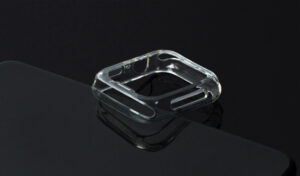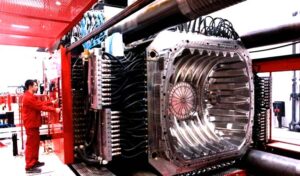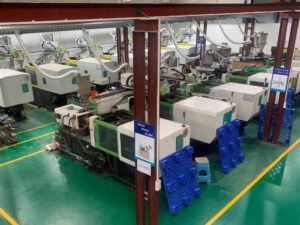Hereby we would like to share common plastic injection mould polishing methods and working principle for you. So that you can know the moulding process when you do products design.
Mechanical polishing is by cutting or plastic deformation of the material surface to remove the surface of the workpiece to get a smooth surface polishing method, the general use of oil stone, wool wheel, sandpaper, etc., mainly by hand, the surface quality requirements of high can be used to ultra-precision polishing method. Ultra-precision polishing is the use of special abrasives, in the polishing fluid containing abrasives, pressed on the surface of the workpiece being processed, for high-speed rotary motion. The use of this technology can achieve Ra0.008μm surface roughness, is the best surface roughness of various polishing methods. Optical lens mold often use this method. Mechanical polishing is the main method of mold polishing.
- Chemical polishing
The basic principle of electrolytic polishing is the same as chemical polishing, that is, it relies on selective dissolution of the tiny projections on the surface of the material to make the surface smooth. Compared with chemical polishing, it can eliminate the effect of cathodic reaction, and the effect is better.
The basic principle of electrolytic polishing is the same as chemical polishing, that is, it relies on selective dissolution of the tiny projections on the surface of the material to make the surface smooth. Compared with chemical polishing, it can eliminate the effect of cathodic reaction, and the effect is better.
- Ultrasonic polishing
Ultrasonic polishing is a processing method to polish brittle and hard materials through abrasive suspension by using ultrasonic vibration of the tool section. The workpiece is put into the abrasive suspension and placed in the ultrasonic field together, and the abrasive is ground and polished on the surface of the workpiece by the oscillation of ultrasonic waves. Ultrasonic processing macro force is small, will not cause deformation of the workpiece, but the tooling production and installation is more difficult.
- Fluid Polishing
Fluid polishing relies on the flow of liquid and the abrasive particles it carries to scour the surface of the workpiece to achieve the purpose of polishing. Fluid power polishing is driven by hydraulic pressure, the medium is mainly made of special compound (polymer-like substance) with good flow through under low pressure and mixed with abrasive, the abrasive can be made of silicon carbide powder.
- Magnetic polishing
Magnetic grinding and polishing is the use of magnetic abrasives to form abrasive brushes under the action of a magnetic field to grind and process the workpiece. This method has high processing efficiency, good quality and easy to control processing conditions. With suitable abrasives, the machined surface roughness can reach Ra0.1μm.
- EDM ultrasonic compound polishing
In order to improve the surface roughness Ra for more than 1.6μm workpiece polishing speed, the use of ultrasound and special high-frequency narrow pulse peak current pulse power supply for composite polishing, by ultrasonic vibration and electric pulse of corrosion at the same time on the surface of the workpiece, quickly reduce its surface roughness, which is obvious and very effective for polishing the rough surface of the mold after processing by turning, milling, EDM and wire cutting.




